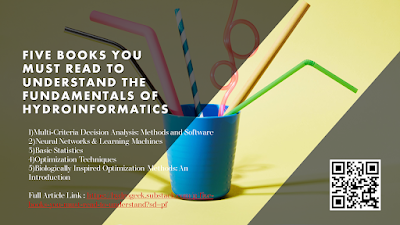Hydroinformatics is a relatively new concept, but it essentially involves the application of data science techniques to water-related problems. Along with data science techniques, it entails the implementation of data extraction and mining, which may aid in the identification of fundamental problems in hydrology, hydraulics, hydropower, and other water resource development and management topics.
Although the concept, like data science courses, is new, the popularity of the application area is growing. For example, only ten to fifteen years ago, we had no idea what informatics was, but it is now one of the most popular topics for the year 2022 with respect to people looking for an international degree.
Its popularity has grown in the last five years. However, there is a scarcity of courses on informatics-related topics. That is why we must rely on books on the subject. The problem is that no single book will teach you everything you need to know about informatics. You must consult several books. I searched and discovered that the following books are sufficient to learn the necessary techniques and applications of informatics in the field of water resource development and management.
@data_hydrology , @Merchandiseor @@products_sustainability
Add to Listy/
